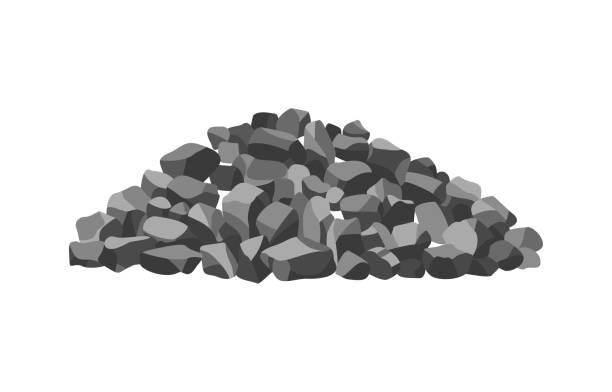
A compacted layer of gravel base provides a stable, load-bearing foundation. Its interlocking nature prevents settling and shifting, distributing weight evenly and ensuring the longevity of the surface above.
gravel base, driveway gravel, compacted aggregate, road base, gravel foundation.
Stone aggregate refers to a mix of crushed stone and sand, sorted into specific size grades. It is a foundational material that provides strength, stability, and volume to building materials.
stone aggregate, concrete aggregate, road building material, drainage stone, quarry stone.
Often designated by a number (e.g., #2 crushed stone), this versatile material is known for its angular shape which locks together for stability.
crushed stone #2, #57 stone, drainage rock, driveway stone, base layer material.
Slag rock is a dense, durable material that is a byproduct of the steel manufacturing process. Its affordability and darker color make it a popular alternative to traditional gravel.
slag rock for driveways, steel slag, recycled aggregate, affordable driveway material, eco-friendly stone.
Asphalt millings are recycled pieces of old asphalt pavement. When compacted, they form a solid, durable, and cost-effective surface.
asphalt millings, recycled asphalt, milled asphalt, asphalt driveway, road base material.
Also known as Recycled Concrete Aggregate (RCA), crushed concrete is a sustainable aggregate made from recycling concrete from demolished structures.
crushed concrete, recycled concrete aggregate, concrete base layer, sustainable aggregate.
Riprap consists of large, angular rocks specifically designed for erosion control. The jagged edges and varied sizes interlock to dissipate the energy of water flow, protecting soil and preventing land loss.
riprap stone, erosion control rock, shoreline stabilization, drainage ditch stone, gabion rock.
A sedimentary rock, limestone is a versatile material with applications in both heavy construction and landscaping.
crushed limestone, road base limestone, cement production, landscaping rock.
Topsoil is the nutrient-rich upper layer of soil essential for plant growth. It is screened to remove large debris and is crucial for creating new gardens and lawns.
screened topsoil, bulk topsoil, garden soil, fill dirt.
Mulch is a protective layer of organic material. Its benefits include moisture retention, weed suppression, and soil temperature regulation.
mulch, hardwood mulch, pine bark mulch, dyed mulch, mulch delivery.

Masonry sand, also known as mason sand, is a fine, washed, and screened sand. Its uniform grain size is critical for creating smooth, durable mortar and stable paver beds.
masonry sand, mason sand, paver sand, mortar sand, playground sand.The backbone of durable structures. This coarse, angular sand provides excellent stability and is a key ingredient in concrete for patios, walkways, and foundations.
concrete sand, coarse sand, paver base sand, aggregate sand.The compacting champion. Composed of fine particles, it's ideal for creating a stable, level surface for a variety of projects.
fill sand, utility sand, compaction sand, leveling sand.The safe and fun choice. This fine, soft sand is specially processed to be clean and non-toxic, making it ideal for recreational areas.
play sand, sandbox sand, white sand, safe play sand.
Originating from metamorphic rock, slate gravel consists of decorative chips with natural color variations. Its flat shape and rich colors make it a popular choice for enhancing landscapes.
slate gravel, decorative stone, slate chips, walkway material.
These are smooth, golden-brown river pebbles with a naturally rounded texture. Meramec rock is valued for its natural aesthetic and is sourced from the Meramec River region.
Meramec rock, river pebbles, decorative rock, landscape stone.
Large boulder rocks are used to create focal points and define spaces in gardens. They can be sourced naturally from fields or quarried for specific shapes and stone types.
landscaping boulders, boulder rocks, garden focal points.
These are boulders chosen for their specific aesthetic qualities, such as shape, color, and texture. Decorative boulders are integrated into landscape designs to add visual interest and a natural feel.
decorative boulders, landscape design, colorful rocks, yard boulders.